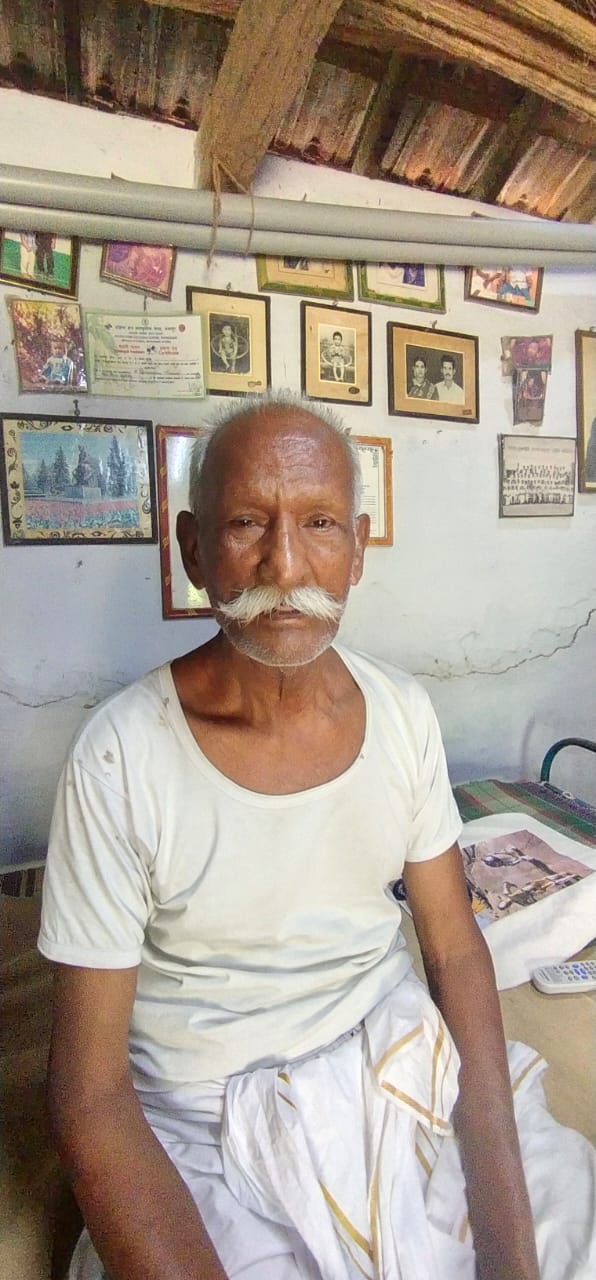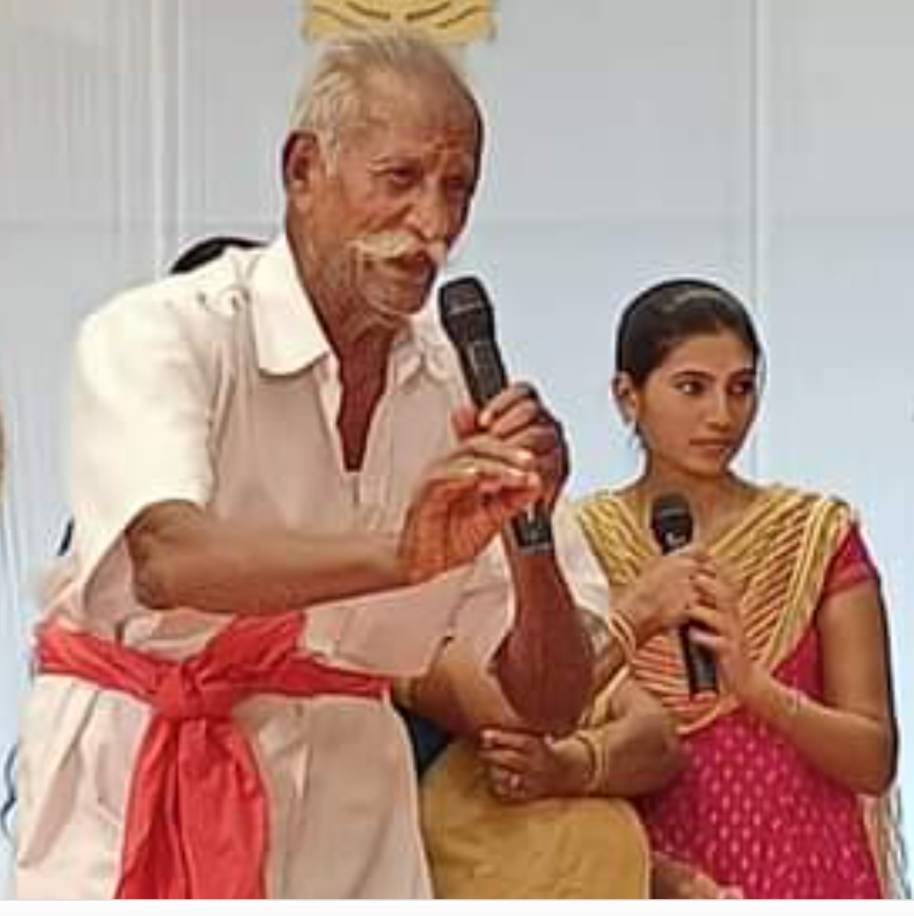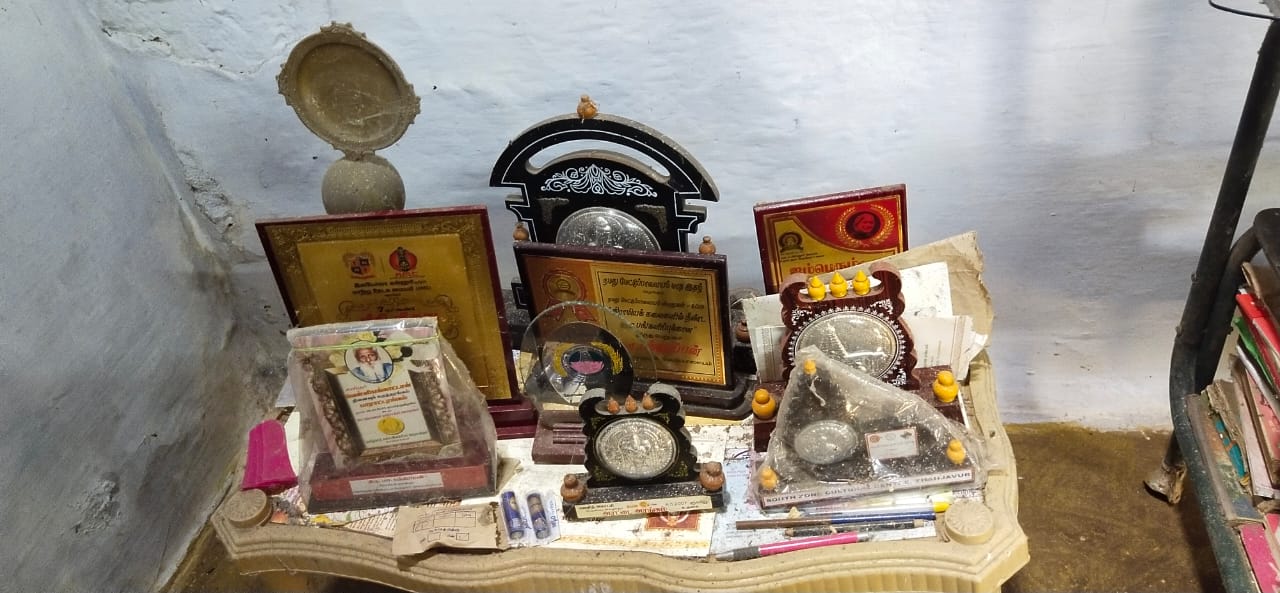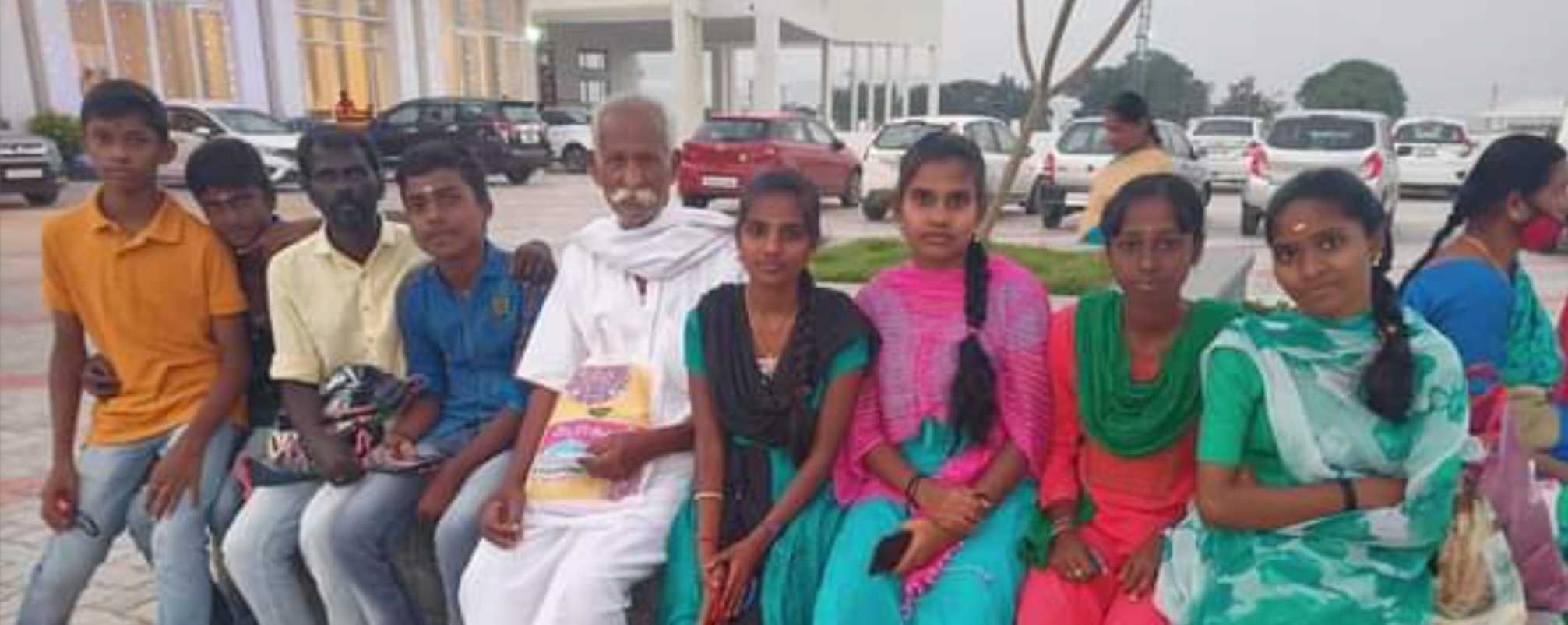Every now and then you come across people who break barriers and inspire us to achieve our goals, sans excuses. Bhathirappan, 85, from Thekampatti village in Coimbatore district, is one such person. He is an exponent of the Tamil folk art Kummi – a mixed form of song and dance and has been performing at various forums since 1958.
We are so used to seeing glitzy dance performances that the first thing that will strike you about Bhathirappan’s art form is its sheer simplicity. With no elaborate costumes or make-up, all the artists require is a good throw of their voice. The performers are all clad in a uniform coloured half-sleeved shirt and a coloured dhoti. Simple dance moves are accompanied by powerful storytelling all via song and dance.
A recipient of many awards and accolades, the latest being the Kalaimani award from the Government of Tamil Nadu, he is still an enthusiastic and active performer. He narrates his life’s story to The Better India.
Belonging to an agrarian family, Bhathirappan tells me that he had to drop out of school after completing his class 10 examination to help support his family. “We have very small farm holdings, and since this is our only source of income, I had to be there to help my family,” he says. Life went on, he got married and had two children while he continued to work on his land in the village.
In his early 20’s he met a folk artist called Doddana Gouder, whom he considers his guru. He says, “It is because of him that I became a folk artist. The first performance we worked on was the story of Harishchandra. We would travel across towns and perform. We did that for almost three years before we worked on our next production.” While farming was the source of income for him and his family, folk art gave Bhathirappan wings to follow his passion.
The next stop for Bhathirappan was Mothepalayam, a neighbouring town where he met Thirumapa Gouder, another proponent of folk art. His troupe learnt Valli Thirumanam – the tale of Lord Murugan, son of Lord Shiva, marrying Valli. Bhathirappan says that this performance is one of their most vital compositions, and they are preserving and performing it till today, for over 40 years.
Performances galore

This performance of Valli Thirumanam is a key art form in Tamil folk art. It is a story which holds significant religious and cultural value in the region and hence is performed at all major festivals and gatherings. The story is enacted in 34 parts, having over 30 dance movements, the artist also has to sing the story while performing at the same time.
As an artist, Bhathirappan says that preserving and ensuring that the form is passed on to future generations is an important responsibility for him. He has taught this to over 150 students over the past 30 years.
Bhathirappan takes pride when he mentions that he has performed across various universities, art festivals, temple festivals and gatherings across Tamil Nadu. There are no costumes, make up or any props. It is a simple art form that requires nothing between the performer and the audience – not even a stage.
Even a street corner can be made into a stage. The artists perform in their regular attire, sing, dance and narrate the story.

One can hear the passion in Bhathirappan’s voice as he says, “Simplicity is all there is to this art form. Most modern art has been reduced to exhibitionism and glamour. There is more show than art. Folk art is the original art form that emerged centuries ago. It is pure and unadulterated.”
He continues, “Folk art was the medium by which culture, history, stories and tradition were preserved and handed down through the generation. It is an art form that helped people express happiness, joy, and even sadness – much before the advancement of science and technology.”
Keeping with the times

While kummi is an art form that has stayed true to its original roots, retaining its rusticity and simplicity through the centuries, Bhathirappan says that they have made some changes to modernise their performance.
While it traditionally used to be the domain of men, Bhathirappan says that they have taught this art form to women, and one can now find many women artists performing Kummi.
Another new element is that their recent performances speak about relevant issues like environmental protection, morals, and social ills.

Bhathirappan says that his troupe has around 15 people across all age groups. They practice every new composition for three months, so that all of them are comfortable with the material. They then practice for the new routine for an hour-and-a-half every day and more so as the performance date comes closer.
For performing for all these years and preserving and protecting the kummi art form, the Government of Tamil Nadu conferred the Kalaimamani Award on 85year-old Bhathirappan on 20 February 2021.
The passion with which Bhathirappan speaks conveys his strong feelings towards this art form. For Bhathirappan, kummi and its practise is a way of life and he derives utmost happiness in being able to share this art form, which he considers his legacy, with the younger generation.
(Edited by Yoshita Rao)
No comments:
Post a Comment